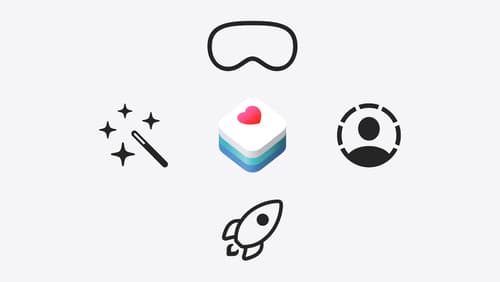what are the key steps to integrate HealthKit in iOS app
Asked on 2024-08-20
1 search
To integrate HealthKit into an iOS app, you can follow these key steps:
-
Check Health Data Availability: Use the
isHealthDataAvailable()function to determine if health data is accessible on the device. This can vary based on the device and OS version. -
Request Authorization: You must request user authorization to read or write the specific health data types your app needs. This is done using the health data access request function, which prompts the user to grant access.
-
Handle Guest Users: If your app supports guest users, ensure that you update your authorization calls to handle errors appropriately. Guest users are restricted from authorizing health data access, so you should discard any health data they attempt to write.
-
Design for Spatial Computing: If you're developing for visionOS, consider refining your app's design to take advantage of spatial computing capabilities. This includes adopting design and interaction patterns specific to visionOS.
-
Utilize HealthKit Capabilities: HealthKit allows you to read and write data, compute statistics, and register for updates when data changes. Make sure to leverage these capabilities to enhance your app's functionality.
-
Sync Data Across Devices: Health data can sync between devices through iCloud, so ensure your app handles this appropriately.
For more detailed guidance, you can refer to the session Get started with HealthKit in visionOS which covers HealthKit integration in visionOS, including handling guest users and designing for spatial computing.

What’s new in watchOS 11
Explore new opportunities on Apple Watch, including bringing Double Tap support to your watchOS app, making your Smart Stack widgets even more relevant and interactive, and displaying your iOS Live Activities in the Smart Stack.

Get started with HealthKit in visionOS
Discover how to use HealthKit to create experiences that take full advantage of the spatial canvas. Learn the capabilities of HealthKit on the platform, find out how to bring an existing iPadOS app to visionOS, and explore the special considerations governing HealthKit during a Guest User session. You’ll also learn ways to use SwiftUI, Swift Charts, and Swift concurrency to craft innovative experiences with HealthKit.
